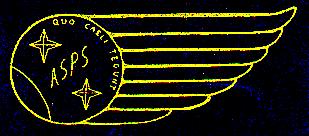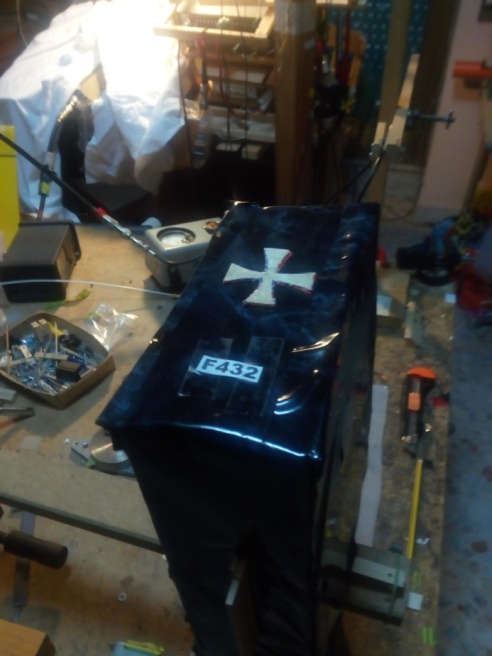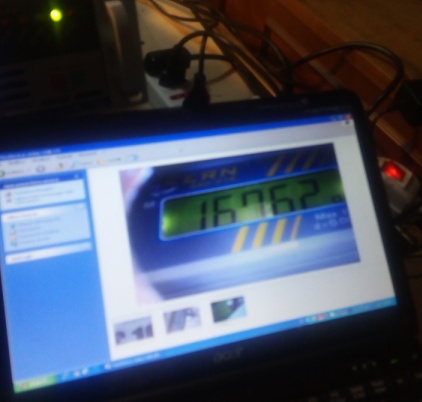






[Nel video sono visibili preampli, ampli e display bilancia su schermo del portatile (a debita distanza)].
La spinta (appesantimento sulla bilancia) cresce all’aumentare del tempo… ovvero lo stesso effetto che avevo notato su pendolo balistico.
Meno male che sembra esistere un processo dissipativo del tutto dato che per quanto risulti assurdo (a livello di interpretazione newtoniana) il problema molto paradossale della spinta pnn è farla cessare una volta spenta l’alimentazione.
Che vuol dire ? che pur con pochi watt posso raggiungere spinte enormi ….
Basta solo attendere.
Nel video ho spento l’alimentazione in uhf dopo circa 40 sec per problemi di surriscaldamento (ho dissipazione termica solo passiva).
E tutto si può realizzare senza violare ne la conservazione dell’energia ne quella della qdm… solo accettando il concetto antirelativistico di diminuzione della massa all’aumentare dell’energia cinetica pnn.
Il raggiungimento di spinte consistenti e superanti la dissipazione (dell’energia pnn a alimentazione spenta) può permettere il decollo da un pianeta anche come la Terra ….
Come ho detto sopra per raggiungere una opportuna velocità di fuga ( salendo progressivamente come un ascensore) basta solo attendere.
In conclusione questo tipo di spinta pemetterebbe la liberazione da ogni vincolo relativistico per raggiungere pianeti simil terrestri ad anni luce di distanza.
Il video è stato girato del dovuto da SergioZ nel
Forum di NasaSpaceflight
e nel Forum
del nostro collaboratore SergioZ
Ovviamente montato il prototipo in verso opposta a fig.1 si assiste a una diminuzione di peso sul piatto della bilancia Kern.
Ho cercato di eliminare errori termici dovuti al cavo coassiale che si riscalda in modi che posso discutere solo con i miei collaboratori.
Ho cercato di eliminarli facendo lavorare le deformazioni termiche CONTRO la spinta pnn.
Ma, ripeto, per non creare impressioni opposte, mi aspetto decisiva certezza solo quando il prototipo pnn F432 avrà operativo il suo “carretto” di fig.A .
Cioè quando F432 sarà una piccola astronave con incluse le DPS (Dispositivo Potenza Supplementare) non potendo come privati disporre di batterie RTG a radioisotopi.
At the last il video, di cui sopra, si vede , per accidenti (probabilmente banali) di natura ignota (sono altamente inesperto di smartphone e svaghi elettronici di ogni tipo ) a circa 90 gradi.
Il destino ha voluto così e in fondo lo apprezzeranno i miei “ammiratori” col botto della gothalist www.asps.it/gotha.htm .
La posizione a 90 gradi con la pnn è in fondo quella a loro più consona :-)

The new law of inertia would greatly
shorten the times of approaching a celestial body.
I
would like to underline an essential datum of the inertia of the pnn systems if what has been revised on the arm scale will
also be confirmed by the next tests of the pnn with
the structure of the prototype with a cart i.e. a very little spaceship (fig.A)
The
violation of the third principle necessarily involves the rewriting of the
Newton first and second principle.
The principle of inertia low is no longer a
uniform rectilinear motion but a uniformly accelerated motion.
This
implies that a law of inertia is something non-linear as hypothesized in
http://www.calmagorod.org/inerzia-della-pnn/
The
thrust should be there even with the engines switched off unless a dissipative
process (similar to the thermal irradiation) is in progress during the
implementation of this inertia law. The
quantification of the dissipative process is currently impossible as its
control and reduction procedure.
Let's get
back to another essential detail with some modifications:
Now let's come back to action/reaction principle and to an event
(A NEW KIND OF INERTIA LAW) which is to me is more important than the thrust
itself: the changing of inertia law by the system that violates the
action/reaction principle.
Recently I came to know about this fantastic correlation:
EmDrive experimentally
verified that "Thrust signals even after the electrical power was turned
off" (from http://www.sciencealert.com/independent-scientists-confirm-that-the-impossible-em-drive-produces-thrust)
The same occurs with more grandeur and evidence for F242 (and F432 December
2017)
https://neolegesmotus.wordpress.com/2016/04/24/f242-is-now-at-2-56-grams-of-thrust/
http://www.asps.it/assettof242.htm
For me "Thrust signals even after the electrical power was turned
off" is not a measurement error and agrees with findings in F242, in the
sense that the violation of Newton's Third principle involves a change of the
law of inertia and therefore the law of inertia for systems that violate the
third principle (PNN and Emdrive) is a uniformly
accelerated motion!
Who
says I don't use mathematics simply must go at http://www.calmagorod.org/inerzia-della-pnn/
[English at https://neolegesmotus.wordpress.com/2015/10/01/as-if-one-wasnt-enough-pnn-breaks-another-law/
- Sergio] and tell me if in his opinion the violation of action/reaction
principle doesn't imply a change in inertia law. I only mathematically defined
an hypothesis completely theoretical about the inertia deriving from violation
of action/reaction principle.
One
salient characteristic of the system that changes inertia law is that when the
power supply is turned off the motion isn't uniform and linear anymore but
uniformly accelerated, thus the mass of the movable object must decrease when
speed increases in order to conserve the energy. It's like if a force was still
present.
Now
this “seems” it has been observed also with the EmDrive.
With
F242 and F432 I'm observing several times this phenomenon
To
recap, in my opinion the violation of Newton's Third (which for me it occurs
probably in the EmDrive too) implies:
1.
the
impulse conservation (momentum) through electrodynamic
field (also Moretti says this in www.asps.it/azione.htm)
2.
the
thrust increase for the same energy used
3.I specify: when
powered the prototype progressively increases its inclination.. but I can't
increase too much the thrust duration due to thermal issues (since the thrust
can't convert itself in kinetic energy on the ballistic pendulum it convert
itself in thermal energy)
4.
the
most important fact: only by violating the Third Newton principle and by
changing the inertia law (in the one I mathematically defined it's even
exponential!) the moving object accelerate even with engine turned off. What
does it mean? That moving object mass must decrease when speed increases in
order to conserve the total energy. On Reddit one
immediately said to me: then it doesn't work! But I didn't reply him that
Relativity has NOTHING to do with the sum of all non-null internal forces of a
mass. What do I want to say? That in physics the concepts are valid only with
the procedures used to define them and NOT with those they HAVEN'T BEEN defined
with.
In my opinion only by changing the law of inertia
one can face interstellar travel.